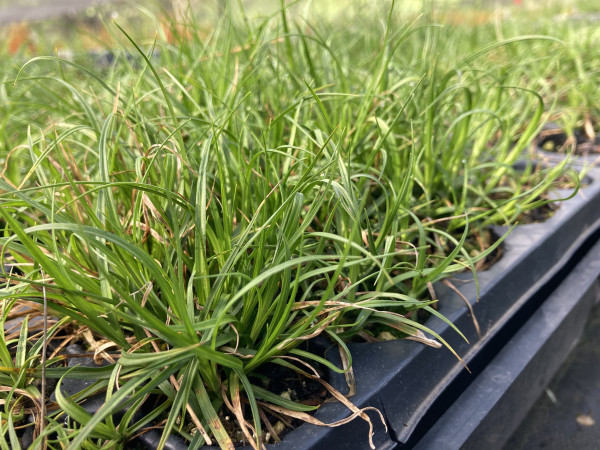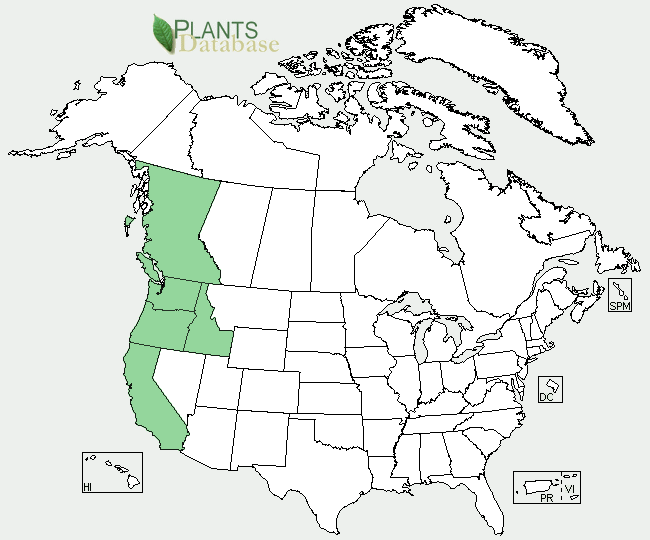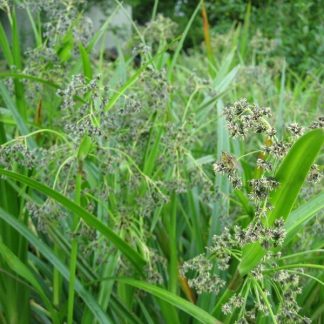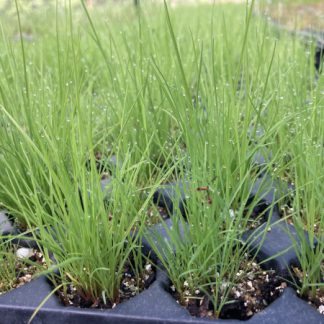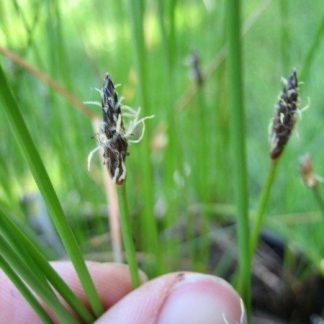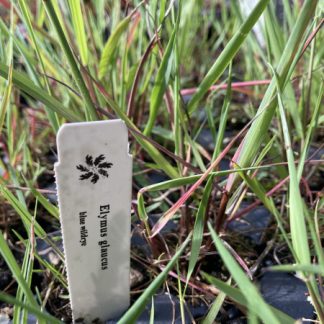Carex tumulicola
foothill sedge
Habit: Carex tumulicola is an evergreen sedge with a bunching habit. Its dense green tufts grow up to 2 feet tall and spread slowly by rhizomes during its lifetime. Stems are long and sharply triangular, similar to other sedges. The leaves connect at the bottom of the stem and are narrow and grass-like. Each blade is about 18 inches long by 1/8 inches wide, medium green and covered with fine hairs. Flowering spikes bear up to 10 loosely spaced, cream-colored florets.
Ecology: foothill sedge inhabits marshes, meadows and gravelly slopes in forests and coastal scrub lands at elevations up to 4,000 feet. It is native range expands from the Oregon and California coasts to the inland valleys. Isolated communities can be found in the Sierras, Idaho, Washington and British Columbia.
Growing conditions: it grows in sun or shade and preferably moist soils, yet tolerates short periods of drought. It is a very durable and versatile plant. The foliage becomes somewhat rough when fully exposed to sun, but in the shade it will present a more refined appearance. Foliage is reduced after flowering, but the plant remains beautiful all year round. Foothill sedge can be used for erosion control, in masses as a ground cover, or to fill shady spots in a woodland garden. It looks best cascading over a rock wall.
This species has great ecological value, supporting a variety of insects, waterfowl, finches, and mammals with its often water-dispersed seeds. Its durable foliage is used as a construction material in animal nesting, and has also been employed by Native Americans on the making of clothing items.
Specs
Perennial grass
6-24 inches (15-61 cm)
12-24 inches (30-61 cm)
8 to 10

